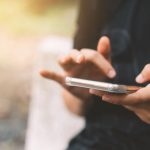
Iron deficiency isn’t being effectively treated in the United States, with low iron levels persisting for years in most patients, a new study finds. Almost 3 of 5 (58%) patients with iron deficiency still had low iron levels three years after their diagnosis, researchers found. Further, it took nearly two years to resolve iron deficiencies in most of the 42% of patients who did recover, results showed. Only 7% of patients had their iron levels return to normal within a year of diagnosis, the study added. “Two years is too long and well beyond the timeframe within which iron deficiency should be able to be sufficiently treated and resolved [with oral or IV treatments],” said lead researcher Dr. Jacob Cogan, an assistant professor of medicine with the University of Minnesota. “The numbers are pretty striking and suggest a need to put systems in place to better identify patients and treat them more efficiently.” Iron deficiency affects nearly 40% of teenagers and young women, but as many as 70% of cases go undiagnosed in these groups, researchers said. Most iron deficiency cases don’t involve full-blown anemia, researchers said. Anemia occurs when the body doesn’t have enough iron to make hemoglobin, the substance in red blood cells that allows them to transport oxygen throughout the body. Cases of non-anemic iron deficiency can cause symptoms like fatigue and… read on > read on >

















